On Oct. 28, President Joe Biden presented his Build Back Better Framework (BBB), a guide for legislative language for several proposals in his $1.75 trillion spending plan. Collectively, the proposal aims to “set the United States on course to meet its climate goals, create millions of good-paying jobs, enable more Americans to join and remain in the labor force, and grow our economy from the bottom up and the middle out.” If passed by the House and Senate, it will be one of the largest investments ever in working-class Americans—a group that was already reeling before COVID-19, and one that has endured even greater adversity since the pandemic began.
In the wake of 2020’s summer of racial unrest—spurred by protests in the aftermath of George Floyd’s murder—Biden made addressing systemic racism a central feature of his candidacy on the campaign trail. While the Build Back Better plan is ambitious in scope, does it redress many of the racial equity issues that he campaigned on? In other words, what does BBB mean for Black, Indigenous, Latino, and Asian communities?
We asked a group of Brookings scholars who are focused on domestic policy to provide their immediate reactions to different aspects of the plan.

Building Back Better for HBCUs and MSIs.
Kristen Broady — Fellow in the Metropolitan Policy Program: The benefits of higher education are well established, but these benefits come with explicit and implicit costs. Options for paying tuition and fees include paying from personal or parental income, scholarships, grants, and loans. The Federal Pell Grant Program provides need-based grants to low-income undergraduate students. BBB will increase the maximum Pell Grant by $550 for the more than 5 million students enrolled in public and private, nonprofit colleges, as well as expand access to DREAMers. While only a slight variation exists with respect to the average amount of Pell Grant aid awarded to first-time full-time students at historically Black colleges and universities (HBCUs) and predominantly white institutions, a greater proportion of HBCU students receive Pell Grants. More than 75% of undergraduate HBCU students rely on Pell Grants to pay for college expenses, compared to 39% of all U.S. undergraduate students who use Pell Grants to help cover the costs of their college education. Hence, the BBB framework will benefit HBCUs that have been historically underfunded yet have persisted in providing African American students with the best mechanism—and for some, the only opportunity—to receive a collegiate education.
Before the COVID-19 pandemic began, the higher education sector had experienced a decrease of 1.3 million students since its enrollment peak in 2010. The pandemic worsened the enrollment situation, as many colleges and universities moved courses online in fall 2020. With increased costs of technology for online learning and revenue losses from cancelled sporting events, decreases in room and board revenue, and auxiliary services declines, the pandemic cost higher ed institutions billions. The costs of overcoming the challenges of the pandemic were high for the majority of colleges and universities, but particularly for HBCUs and other minority-serving institutions considering their lower endowments and lower core revenues. BBB will make historic investments in HBCUs, Tribal colleges and universities, and minority-serving institutions (MSIs) to build capacity, modernize research infrastructure, and provide much needed financial aid to low-income students. The well-preserved intentions of these institutions since their founding has been to provide African Americans and other minority groups with a seat at the proverbial table of higher education and to make possible life-altering opportunities beneficial for their families and communities.

BBB leaves (almost) no one behind.
Camille Busette — Senior Fellow and Director of the Race, Prosperity, and Inclusion Initiative: The Biden administration’s Build Back Better Framework tackles poverty, inequities in health-care access, and makes some important investments in affordable housing, child care, pre-K, climate change, and environmental justice that could change the economic mobility picture for millions of low-income families and families of color. These investments and supports center on dignifying and creating cumulative paths of opportunity for the tens of millions of Americans who have consistently been left behind over the last seven decades of American domestic policy.
Almost everyone is included in these proposals—except for returning citizens, who in the U.S. are disproportionately male and Black. Black men have been disproportionately incarcerated both before and during the highly problematic War on Drugs. Many of these men are young and are the products of the challenges that the Build Back Better Framework seeks to ameliorate. While it’s important to be forward looking in policy, we also need to create a path to economic and physical well-being for our returning citizens.

A step in the right direction, but more work is needed to achieve an equitable economy.
Tonantzin Carmona — David M. Rubenstein Fellow in the Metropolitan Policy Program: The Build Back Better debate raises important questions, including: Is American wealth distributed equitably? In 2019, the 400 richest Americans held more wealth than all 10 million Black households and a quarter of Latino households combined. The racial wealth gap is a result of policy decisions that led to the extraction of wealth from Black and other households of color over generations, and of a tax code that advantages the wealthy and corporations. While the Build Back Better Framework contains a new minimum tax on corporate profit and the new surtax on multi-millionaires and billionaires, it does not include bolder fiscal tools or economic policies that challenge the status quo, such as a wealth tax, baby bonds, reparations, or student loan forgiveness.
However, the framework does aim to rectify wrongs through its tax system. The Child Tax Credit (CTC), for example, would make its full refundability permanent. Before the American Rescue Plan, roughly half of all Black and Latinx children did not receive the full CTC due to the family’s low income, excluding families who needed it the most. If implemented, this change would be an impactful driver of poverty reduction. Additionally, investments in the IRS would improve fairness in the tax enforcement system. This would correct for the richest 1% of Americans evading $160 billion in taxes every year, while the IRS’s audits disproportionately targeted low-income people of color.
BBB is certainly a step in the right direction, but it is a reminder that more work needs to be done to achieve an equitable economy. The tax code can be a powerful tool; we should not be afraid to use it.

The Biden administration chips away at racial and ethnic disparities in health care.
Keon L. Gilbert — David M. Rubenstein Fellow in Governance Studies: The Biden-Harris administration has identified racial equity as a key priority, with health equity being a main focus of that agenda. The Build Back Better Framework seeks to expand health-care access to 4 million uninsured adults by expanding the Premium Tax Credit. Recent reports from the CDC document a rise in the uninsured. In 2014, health-care coverage became closer to a reality for many American adults. The Affordable Care Act, with the opening of the Medicaid and marketplace coverage expansions, helped expand coverage for close to all adults at or below 138% of poverty (in states that expanded Medicaid) and offered tax credits to those with incomes up to 400% poverty could purchase insurance through the marketplace, according to KFF. Insurance coverage has increased across racial and ethnic groups. However, many non-elderly Black, American Indian and Alaska Native, and Hispanic adults remain more likely than their white counterparts to be without coverage.
The first half of 2021 revealed that 9.9% of adults aged 19 to 64 were uninsured, a finding that highlighted how insurance coverage gains actually deepened during the COVID-19 pandemic; compare this to uninsured rates of up to 13.4% in early 2020 and 11.1% in 2019. Six percent of adults reported losing employer-based insurance when they lost their jobs during the pandemic, though 67% of those obtained coverage elsewhere. Many Americans with and without health coverage continue to struggle paying for insurance and other health-related costs such as medical bills. Survey data identified a recurring issue with medical debt. Americans depleted their savings, delayed education or career plans, and added debt to manage medical bills. The result of these decisions has led many of them to be unable to meet basic daily needs. History has documented that the inability to meet basic needs will increase risks for chronic diseases, delay preventative care, and people will not be able to identify time nor have resources to engage in healthy behavior change. Health-care coverage has to be linked to social and economic policies—not only to save dollars in health-care spending, but to provide access to health-promoting resources that will mitigate risks for the onset or severity of the leading causes of death. The 12 states that have yet to expand Medicaid also have high concentrations of inequities in health and are ranked at the bottom of national rankings.

BBB (and BIF) plant a few hardy seeds for environmental and energy equity, but they will need tending.
Carlos Martín — David M. Rubenstein Fellow in the Metropolitan Policy Program: BBB, coupled with the Bipartisan Infrastructure Framework (BIF), presents a historic investment toward Americans’ transition away from fossil fuels and for investing in communities that suffer the most from our previous fossil fuel reliance. They include a wide range of potential benefits for communities of color in the form of state and local energy assistance grants, clean energy incubators, training disadvantaged workers, aid to environmental justice programs, and increasing Superfund remediation, to name a few benefits that have specific allocations for underserved communities. But spending the bulk of the resources in the right places—and in ways that historically underserved and over-extracted communities can tap—is a work in progress.
The biggest piece is BBB’s $550 billion for climate-related policy and programs, including tax credits for companies and consumers of electric vehicles, solar panels, energy retrofits, and a range of other climate-positive actions. For example, almost $6 billion is allocated for home-efficiency energy credits and slightly more for building electrification, with higher credits for lower-income communities. For low-income and communities of color, energy tax credits (as opposed to direct aid) have usually not been successful for a range of reasons, not the least of which is the amount of money needed up front coupled with the wait for credits to materialize. The BBB corrects some of this by giving homeowners an immediate rebate that then transfers to an energy remodeler, who even gets a bonus for working in underserved communities. Yet implementation is the usual challenge that legislation rarely discusses, and communities of color often fall through the cracks of outreach campaigns, application processes, approvals, and ultimately insufficient dollars for their individual energy remodeling needs—especially for renters that pay their own utilities. The BBB also increases low-income weatherization grants for some of these folks that traditionally get left behind with $3.5 billion. Yet, the lessons from the American Recovery and Reinvestment Act’s $5 billion for the same program have yet to be fully learned.
These voluntary, household-focused programs are certainly positive, but they dance around the structural powers—such as the utilities and land developers and permitting authorities—that perpetuate injustice and are the arbiters of emissions of greenhouse gasses and other human hazards. The Biden White House launched the program and budgetary guidance known as Justice40 early in its administration—a requirement that 40% of the overall benefits of relevant federal investments go to disadvantaged communities. The guidance is occasionally echoed in the BBB and BIF, but it should more rigorously be upheld and specified in the allocation, engagement, and local TA–not just for the explicit physical investments from the $1 trillion BIF, but also the rule implementations, competitive grant awards, household incentives, and regulatory enforcements in the $1.75 trillion BBB.
After all, the environmental manifestations of racism, wealth disparity, and other discrimination are deeply rooted. Replanting the orchard is in order.

Build Back Better contains important investments for Native communities, but more still needs to be done.
Robert Maxim — Senior Research Associate in the Metropolitan Policy Program: The Build Back Better Framework makes essential—if still incomplete—investments benefitting Tribal Nations and Indigenous Peoples. In particular, the framework’s investments in combatting the climate crisis are necessary for the well-being of Native communities. Recent research has confirmed what Native voices have long said—that because of the lingering effects of U.S. land theft and forced relocation, today Native people live in areas that are among the most exposed to the effects of climate change.
Other components of the Build Back Better framework will have important benefits for Tribal Nations and Indigenous Peoples. The framework’s investments in housing are desperately needed: Native households in Tribal areas experience overcrowding at rates eight times the national average, and Tribal areas faced an estimated shortfall of 68,000 housing units. And BBB’s health-care expansion will benefit Native people, who, despite U.S. government treaties promising health care for Tribal citizens, still face uninsured rates higher than any other ethnic group. The framework’s Rural Partnership Program will support rurally based Tribal Nations in meeting the economic and human needs of their citizens. And the framework makes important investments to increase financial aid, support student retention and completion, and improve research and development infrastructure at Tribal Colleges and Universities and other minority-serving institutions that serve Native students.
The Build Back Better Act marked up in the House in September contained an array of specific provisions for Tribal Nations, ranging from Tribal electrification to Tribal public safety. It remains to be seen how many of those make it into this final package. In this regard, while the Build Back Better Framework is a necessary investment, it will not by itself be a sufficient one. Many of the challenges that Indigenous Peoples face today are the direct result of U.S. government actions, and it is necessary that the U.S. government begin rectifying those past policy decisions. The Build Back Better Framework is an important first step in doing so—but it cannot be the last.

Investments in early education are good, but families are still vulnerable outside of schools.
Andre M. Perry — Senior Fellow in the Metropolitan Policy Program:
Early child care is as basic as a K-12 education and higher education for individual and societal wellness. However, rising costs in education, particularly for early child-care services, have made essential goods a luxury. From 1972 to 2007, spending on child care increased by 2000%, clearly outpacing inflation and wage growth. As a result, too many low-income families (primarily women) are forced out of the labor market to take care of their children. And, many working-class families in low-paying jobs are limited to substandard options. While this is an issue for all racial groups, Black and Hispanic families are much more likely to have to make these kinds of choices. The poverty rate in 2019 for Black and Hispanic families was 18.8% and 15.7%, respectively, compared to 7.3% for Asian and non-Hispanic whites, according to Census Data.
Because Black and Hispanic families are more likely to be poor, more as a proportion of those respective populations stand to benefit.
Combined with the increase in the Child Tax Credit for families with low or no income for children ages 6 to 17 and $3,600 for children under age 6, implementation of this framework will put money into parents’ pockets while reducing costs for early child-care services. Few will argue that this isn’t materially and symbolically good for people of color. The Build Back Better Framework addresses the resource gap that is strongly correlated with educational disparities. For too long, the achievement gap has been associated with a lack of work ethic, bad teachers, and schools. The Build Back Better Framework offers to ameliorate the racial achievement gap, which decades of education reform have laid blamed on teachers and school districts.
However, it’s what’s not in the framework that BIPOC communities must be concerned about. Kids don’t live in schools; they live in neighborhoods. The lack of voter protection and criminal justice legislation will mitigate educational investments. In addition, the Biden administration has yet to cancel student debt, which disproportionately impacts Black and Brown people and neighborhoods. Moreover, BBB’s focus on addressing income disparities and not the wealth gap, which sees white families have 10 and eight times the net worth of Black and Latino families, respectively, neglects the structural racism that created it.

Affordable housing policy is essential.
Rashawn Ray — Senior Fellow in Governance Studies: Home sales have inflated exponentially over the past decade. And yet, it pales in comparison to the rental market. During the first half of 2021, rent increased over 9% across the country. Some of this pattern is coupled with housing prices more broadly. From April 2020 through April 2021, home prices increased the most over a 12-month period compared to any period over the past 30 years. Monthly rent has increased over $150 in Atlanta, nearly $350 in Ontario, California, and roughly $100 in Dallas and Philadelphia. And, the New York Fed predicts even greater rent increases into 2022.
In Nashville, a two-bedroom apartment is nearly $1,600 a month. The minimum wage in Tennessee is $7.25, which is considered poverty wages. Tennessee has the most minimum-wage workers among all states. Some of the poverty is concentrated in the historic Jefferson Street corridor, which was once a thriving Black middle-class area. Though its HBCUs still continue on, the local community has faltered. This is why President Biden’s inclusion into the infrastructure bill of funding to restore Black communities destroyed by highway construction is so essential.
Likewise, affordable housing legislation must commence. Black people are more likely to work in low-wage jobs and live in areas susceptible to abrupt rent increases. In a study of COVID-19 in Detroit, Black residents were seven times more likely to be very concerned about being evicted and 17 times more likely than white residents to report needing rent assistance. In Nashville, Councilman Brandon Taylor proposed legislation to force landlords to give tenants at least a 90-day notice of rent increases, but the bill has yet to pass. Biden’s plan to provide housing vouchers for renters and down-payment assistance for first-time homebuyers can help. Without these safety nets, a growing number of Americans will continue to be shut out of the American dream—which is turning into an American nightmare even beyond the pandemic.

BBB includes provisions that would improve the overall well-being of Latinos for generations, especially in affordable health care.
Gabriel R. Sanchez — David M. Rubenstein Fellow in Governance Studies: The Build Back Better Framework as currently written offers access to free preschool for all 3- and 4-year old children, providing Latino parents access to high-quality programs in the setting of their choice–from public schools to child-care providers to Head Start. This policy will improve the economic and overall well-being of the Latino community for generations to come.
BBB will also significantly expand access to affordable health care for all Americans. This is particularly important for Latino Americans, who have consistently had a larger segment of their population who lack health insurance. For example, almost 10.9 million Hispanic people were uninsured in 2019 before President Biden took office, and—as we have written about previously–the cost of health care was highly salient to Latino voters in 2020, so this policy will directly respond to the Latino electorate who spoke loudly in 2020 about their need for affordable health care. This aspect of the larger law is particularly timely for Latinos given that the African American Research Collaborative/Commonwealth Fund American COVID-19 Vaccine Poll identified that 12% of Latino adults have lost their health insurance due to the pandemic.
The Brookings Institution is committed to quality, independence, and impact.
We are supported by a diverse array of funders. In line with our values and policies, each Brookings publication represents the sole views of its author(s).
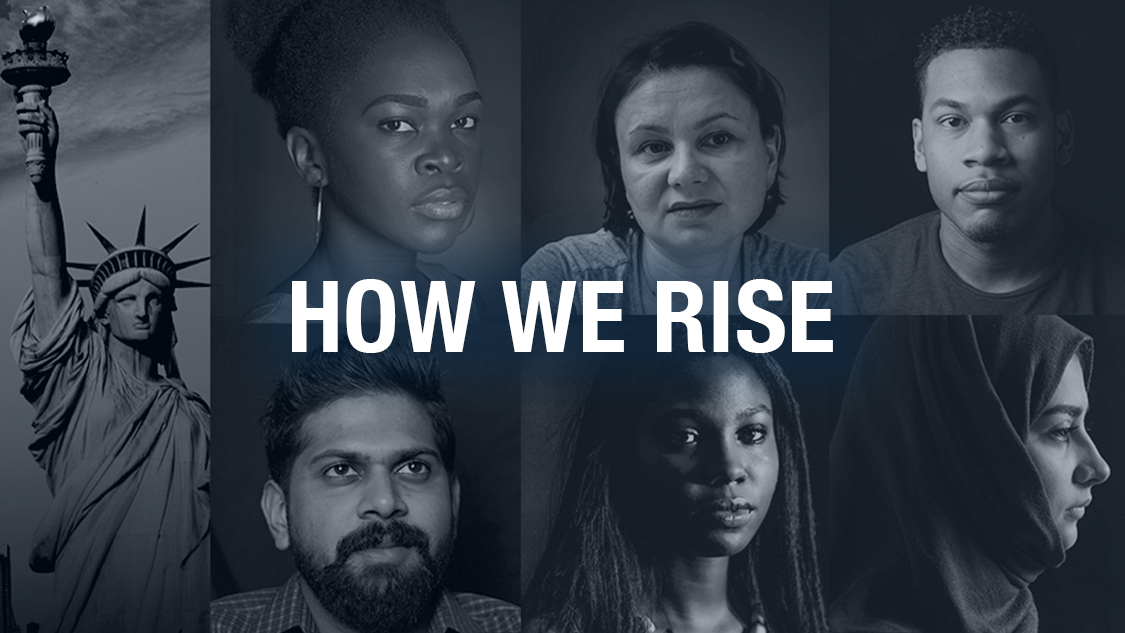
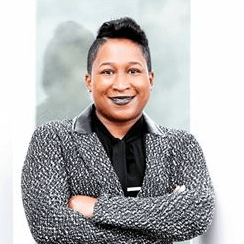
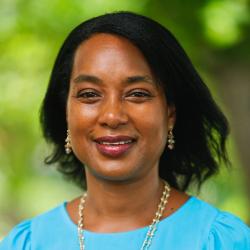
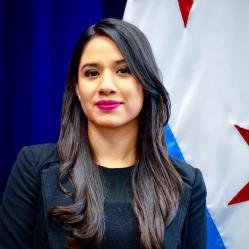

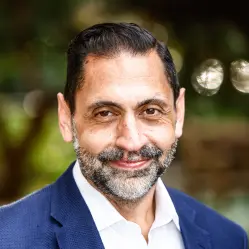
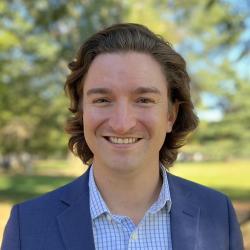
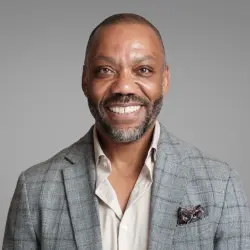

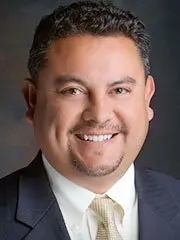

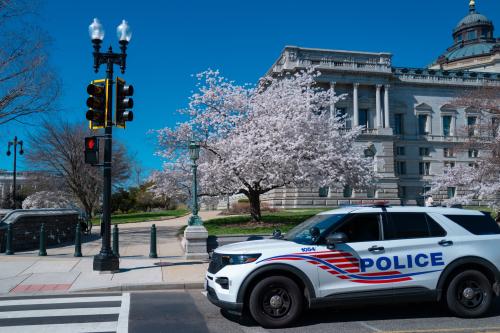
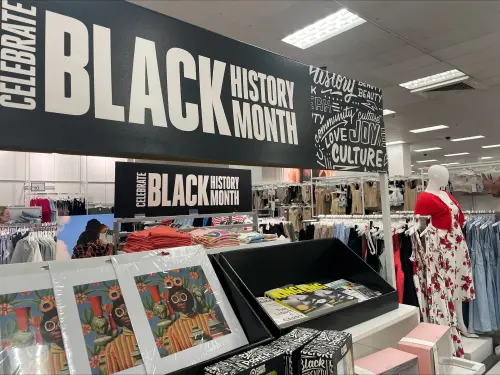
Commentary
What does the Build Back Better Framework mean for BIPOC communities?
November 5, 2021